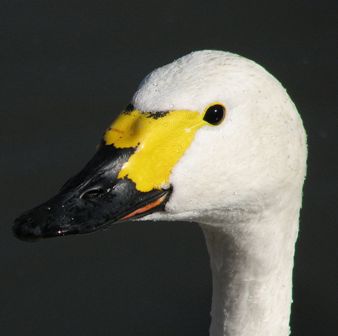Beautiful Loyalty
1 Corinthians 7:10
And unto the married I command, yet not I, but the Lord, Let not the wife depart from her husband:
Most water fowl are faithful to one mate over long periods of time. The swan, in particular, champions marital fidelity.
 In North America they are called whistling swans or tundra swans. Another member of the same species is usually found in Europe and Asia, where it is called Bewick’s swan. Researchers report that each has a unique pattern of yellow and black on its bill, making individuals easy to identify. This allowed researchers to trace their lives over many years.
In North America they are called whistling swans or tundra swans. Another member of the same species is usually found in Europe and Asia, where it is called Bewick’s swan. Researchers report that each has a unique pattern of yellow and black on its bill, making individuals easy to identify. This allowed researchers to trace their lives over many years.
These beautiful creatures have relatively long life spans. One individual was traced for 26 years. Typically laying four eggs in nesting season, they breed for most of their lives. They are highly territorial. In a face-off for food or nesting area, the largest male is usually the winner. When there is a disagreement, the males face each other while their mates cheer them from the sidelines. Single swans enjoying a nice discovery of food are often driven off by couples. Couples are faithful for life. Researchers say that they have recorded no cases of divorce among successfully reproducing couples. Nor do they report any case of marital infidelity among swans. If a mate is lost, the survivor often takes over a year to settle down with another mate. In one case, a survivor waited for six years.
Marital fidelity is also God’s instruction to humans. Today many factors are allowed to challenge marital infidelity. Often, infidelity before or after marriage is portrayed as simply normal. But if swans can manage fidelity, we humans have no excuse for infidelity.
Prayer:
I thank You, dear Father, for the gift of marriage. Help Christians, both young and old, to resist the pressures around us to misuse sex. Help us to be a positive example in a society that shows a decreasing respect for marriage and that increasingly suffers from the curses brought about by infidelity. In Jesus’ Name. Amen.
Notes:
Scott, Dafila. 1992. “Swans semper fidelis.” Natural History, July, p. 26. Photo: Head of a Bewick’s swan. (PD)